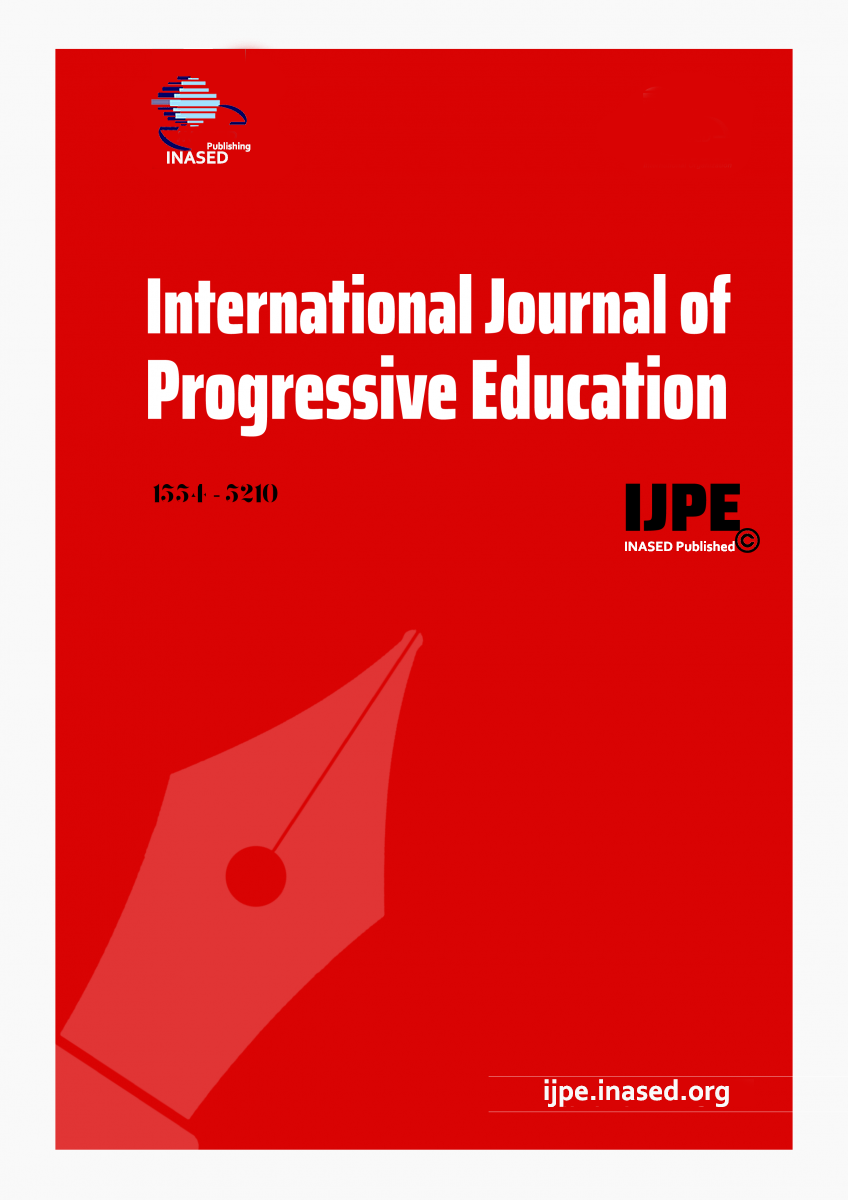Original article | International Journal of Progressive Education 2017, Vol. 13(3) 129-139
Teaching Controversial Issues in the JLL Classroom for Chinese Students
Yasuko Shimojima
pp. 129 - 139 | Manu. Number: ijpe.2017.032
Published online: October 08, 2017 | Number of Views: 208 | Number of Download: 800
Abstract
This paper discusses how teachers explore teaching controversial issues in the Japanese language classroom to Japanese language learner (JLL) or culturally and linguistically diverse (CLD) students who have different cultural and political backgrounds. Assuring educational opportunities with consideration of JLLs’ background is important especially in this globalized world. Students who spent several years in their home countries had missed the earlier part of the culture in the host countries, and they do not internalize host culture fully. Lack of cultural knowledge or literacy would lead to inequality of attainment. The research was conducted in a Japanese language classroom for Chinese from People’s Republic of China (ROC) newcomer students in a commercial night public high school in Japan.
This study examines how a Japanese teacher were aware of the cultural aspects of students, searched for appropriate methods to teach controversial issues. The research methods are participatory observations and semi-structured interviews with teachers. Through interaction with Chinese newcomer students, the Japanese teacher’s cultural and political awareness and political correctness was induced as he observed what the students needed to know and experience. The teacher tried to infuse students with global awareness in his hybrid history embedded Japanese language class. The concept which were not relevant to the political status of the country of origin, neutrality between the country of origin and Japan, were explored during the lessons.
Keywords: controversial issues, Japanese language learner (JLL) students, culturally and linguistically diverse (CLD) students, culturally responsiveness, cultural literacy
| How to Cite this Article? |
|---|
|
APA 6th edition Harvard Chicago 16th edition |
| References |
|---|
|
Banks, J.A. (2012). Multicultural Education: Characteristics and Goals. In Multicultural Education: Issues and Perspectives (pp.3-41). New Jersey: Wiley Trilling, B & Fadel, C. (2012). 21st Century Skills: Learning for Life in Our Times. NY: Jossey-Bass Gay, G. (2010).Culturally Responsive Teaching: Theory, Research, and Practice. NY: Columbia University Press. Hirsch (1988). Cultural Literacy: What Every American Needs to Know. New York: Vintage Kawasaki, S. (2011). Tabunka-kyoiku to Hawaii no Ibunkarikai-gakushu (Multicultural Education and Intercultural Lessons in Hawaii). Kyoto: Nakanishi-ya Shuppan). Krashen, S.D. (1985). The Input Hypothesis: Issues and Implications. NY: Longman Ladson-Billings, G. (1994). The Dreamkeepers: Successful Teachers of African American Children. San Francisco: Jossey-Bass. Michell, S.L. (2010). Culturally Relevant Pedagogy. In Culturally and Linguistically Diverse Exceptional Students, Grassi, E.A. (Ed.), (pp.187-197). London: SAGE Publishing. Minamiura, R. (2013). Gaikokujin Jidoseito no tameno Shakaika-kyoiku (Social Studies Education for Culturally and Linguistically Diverse Students). Tokyo: AkashiShoten. Strike, K. & Soltis, J.F. (1998). Dealing with Diversity: Multiculturalism and Religions. In The Ethics of Teaching. (pp. 70-93). NY: Teachers College Press. Tsuji, N. (2010). Chapter one: Classroom Management. In Nihongo ga Hanasenai Otomodachi o Mukaete (Welcoming Japanese Language Learners as Friends). Tokyo: Kuroshio Shuppan Nieto (1996). Affirming Diversity: The Sociopolitical Context of Education. NY: Longman. Shimojima, Y. (2014).Teachers’ Perspectives and Case Studies of Japanese Language Lesson Plans for Chinese Newcomer Migrant Students in a Night Public High School. The Journal of Engaged Pedagogy, Vol.14, No.1, 47-56. Oxfam (2006). Teaching Controversial Issues. Oxford: Oxfam Development Education. Short, G. (2012).Teaching the Holocaust in the Multicultural Classroom. In Teaching Controversial Issues in the Classroom: Key Issues and Debates. Cowan, P. & Maitles, H. (Eds.). (pp130-141). London: Continuum International. Smyth, G. (2012). Islamophobia. In Teaching Controversial Issues in the Classroom: Key Issues and Debates. Cowan, P. & Maitles, H. (Eds.). (pp-165-175). London: Continuum International. Van Driel & Kahn (2012). Homophobia. In Teaching Controversial Issues in the Classroom: Key Issues and Debates. Cowan, P. & Maitles, H. (Eds.). (pp-176-187). London: Continuum International. Villegas, A.M. & Lucas, T.L. (2007).The Culturally Responsive Teacher. Educational Leadership, March, Vol.64, No.6, 28-33. |


